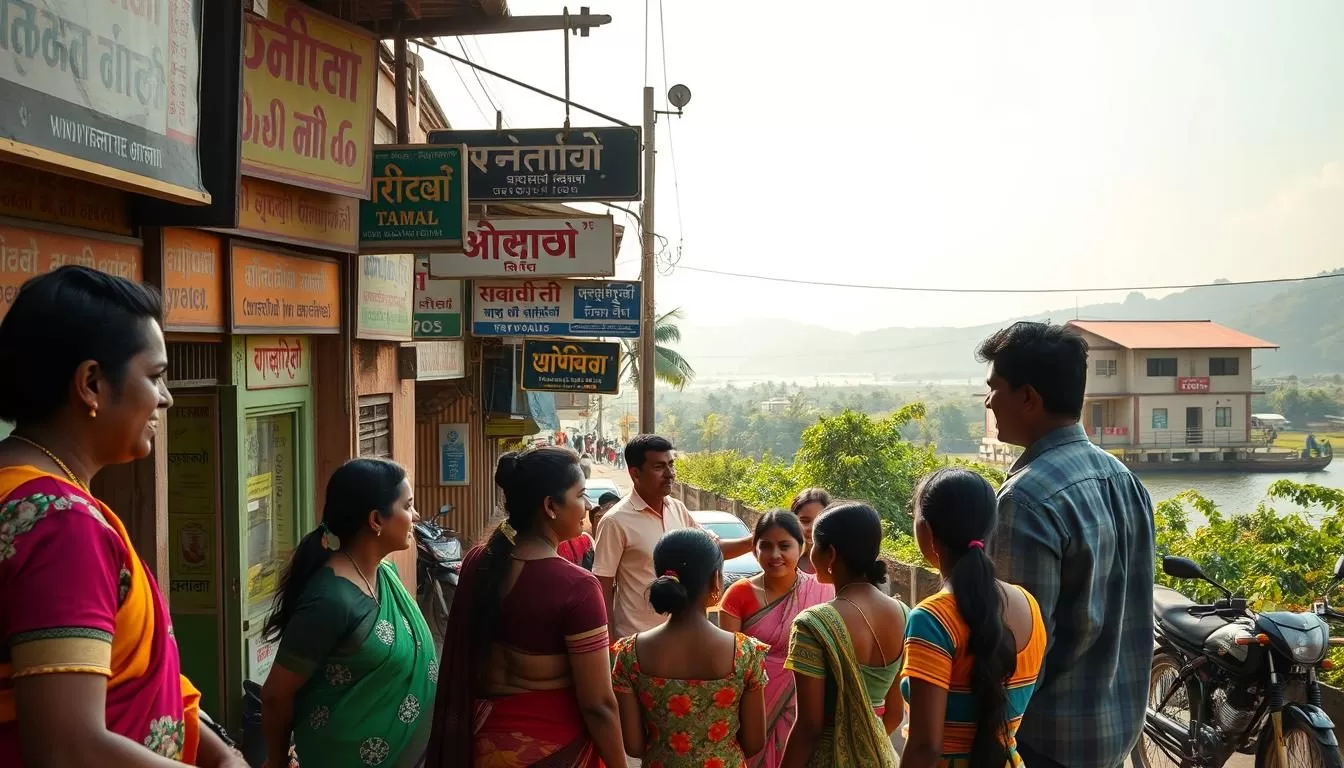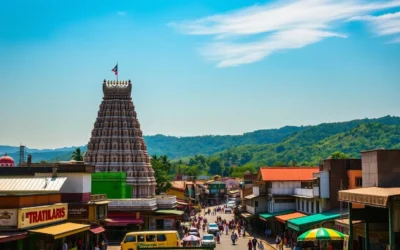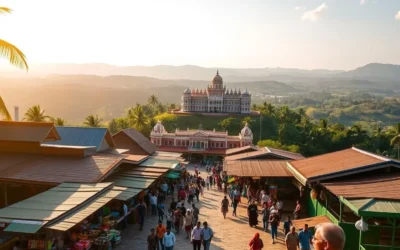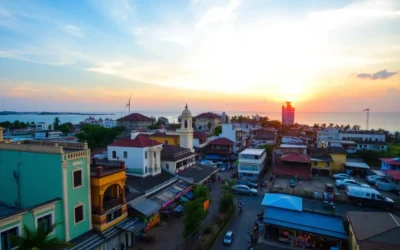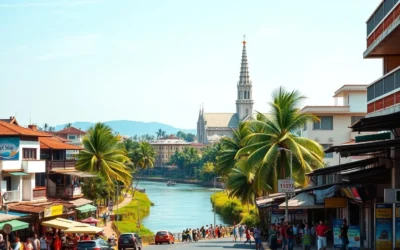✓ Accommodations✓ Flights✓ Rental Cars✓ Tours & Activities
You’re about to explore one of India’s most culturally rich states, where a tapestry of languages reflects its heritage and historical influences. With Malayalam as the official language, Kerala stands out for its linguistic diversity.
As you delve into Kerala’s language landscape, you’ll find that several languages play significant roles. While Malayalam is the mother tongue for the majority, other languages like Tamil, Tulu, and Kannada are also prominent.
Understanding this diversity helps you appreciate Kerala’s unique cultural identity and its place within India’s broader linguistic mosaic. This article will take you on a journey through Kerala’s major languages, their historical development, and their cultural significance.
The Linguistic Landscape of Kerala
As you explore Kerala, you’ll discover a complex linguistic landscape that reflects the state’s cultural identity. The Malayalam language, part of the Dravidian language family, is predominant and plays a crucial role in shaping the state’s cultural heritage.
Kerala’s Position in India’s Language Map
Kerala is nestled in the southwestern tip of India, a region known for its linguistic diversity. The state’s unique geographical location has contributed to its distinct linguistic profile. With Malayalam as the official language, Kerala stands out in India’s language map.
- The state’s language is closely tied to its cultural identity and heritage.
- Malayalam literature is among the richest in India, reflecting the state’s deep-rooted literary traditions.
The Importance of Language in Kerala’s Culture
Language is not just a means of communication in Kerala; it’s the backbone of the state’s culture. It influences various aspects of life, including education, politics, and traditional art forms like Kathakali and Mohiniyattam. The high literacy rate in Kerala is closely linked to the importance given to language education.
- Language preserves and transmits cultural practices, family traditions, and religious practices.
- Linguistic competence is essential to fully experiencing Kerala’s cultural richness.
Malayalam: The Official Language of Kerala
As you explore the linguistic landscape of Kerala, you’ll discover that Malayalam is not just a language, but a cornerstone of the state’s identity. It’s the primary language used in official communications, education, and media, playing a vital role in the daily lives of the people of Kerala.

History and Evolution of Malayalam
The history of Malayalam is a fascinating tale of evolution, influenced by various languages including Sanskrit, Tamil, and later, European languages like Portuguese, Dutch, English, and others. This blend of influences has shaped Malayalam into a unique linguistic form. Over time, Malayalam developed its distinct grammar and vocabulary, diverging from its ancient roots to become the distinct language we know today.
Malayalam Script and Literature
Malayalam has its own script, derived from the ancient Brahmi script, which has been adapted over the centuries. The script is used to write a rich body of literature that includes classical works, poetry, and contemporary writings. Malayalam literature is known for its diversity and depth, reflecting the cultural and social nuances of Kerala. The speakers of Malayalam take great pride in their literary heritage, which is an integral part of their cultural identity.
Regional Dialects of Malayalam
Despite its standardized form used in education and media, Malayalam is spoken in various dialects across Kerala. There are five primary regional dialects, each with its own distinct flavor and variations in vocabulary and pronunciation. For instance, the Northern dialect differs significantly from the Southern dialect in both intonation and vocabulary. Additionally, religious and community variations exist, such as Mappila Malayalam among Muslims and Nasrani Malayalam among Saint Thomas Christians, showcasing the diversity of spoken languages within Malayalam.
English in Kerala: A Language of Opportunity
English has emerged as a crucial language in Kerala, offering numerous opportunities for its residents. The people of Kerala have a particular interest in studying the language, and as a result, English has a stronghold on Kerala’s social fabric.
The English language has left an indelible mark on Kerala’s social and cultural life. They regard English as more than simply an elite language; it is also a language of jobs and possibilities. This perception has driven the demand for English education across the state.
Colonial Influence on Language
The colonial past of Kerala has significantly influenced the linguistic landscape of the state. English was introduced as a language of administration and education during the colonial era, and its impact has endured even after independence.
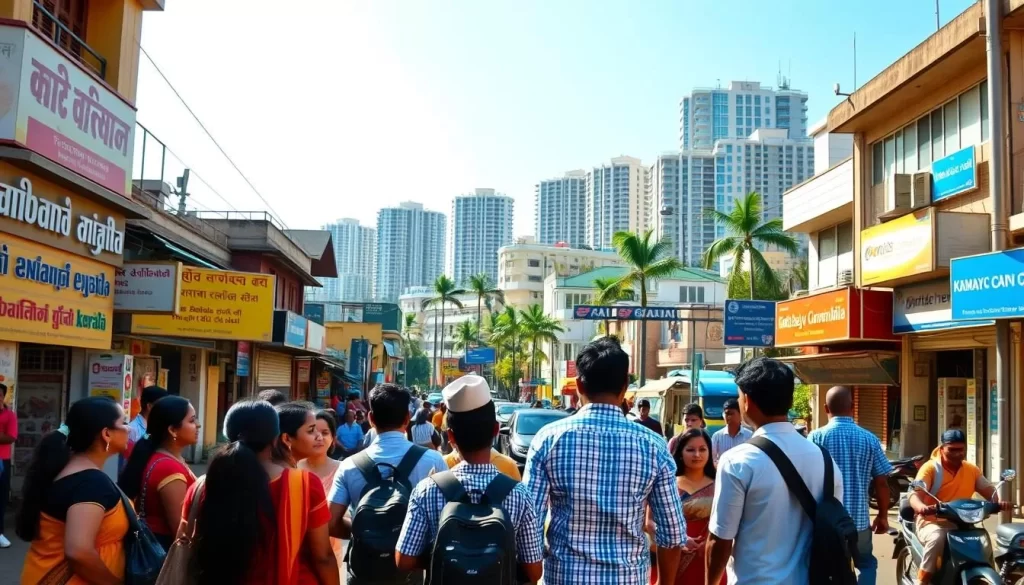
English Education and Literacy in Kerala
Kerala boasts one of India’s highest English literacy rates. English education begins in primary school and continues through higher education across the state. Here are some key aspects of English education in Kerala:
- English serves as the medium of instruction in many private schools and most colleges and universities, particularly for professional courses.
- The state’s emphasis on English education has contributed significantly to Kerala’s successful diaspora.
- English newspapers, magazines, and books enjoy wide readership in Kerala.
| Aspect | Description | Impact |
|---|---|---|
| English Literacy Rate | One of the highest in India | Enhanced employability |
| Medium of Instruction | Used in private schools and higher education institutions | Better career opportunities |
| Readership | Wide consumption of English media | Increased exposure to global perspectives |
Tamil: A Significant Minority Language
As you explore the linguistic diversity of Kerala, you’ll discover that Tamil plays a significant role as a minority language. With its Dravidian roots, Tamil is widely spoken across four South Indian states, including Kerala, Karnataka, Andhra Pradesh, and Telangana.

Tamil Speakers in Kerala
Tamil speakers in Kerala form a considerable minority, contributing to the state’s linguistic diversity. Many of these speakers are found in the southern districts bordering Tamil Nadu, where cultural and historical ties are strong.
Cultural Connections Through Tamil
Tamil and Malayalam share deep linguistic and cultural connections, belonging to the Dravidian family and sharing vocabulary and grammatical features. You can observe Tamil influences in Kerala’s traditional art forms, religious practices, and culinary traditions. Historical kingdoms like the Cheras have created shared historical narratives and cultural traditions between Kerala and Tamil Nadu. Contemporary cultural exchange continues through media, with Keralites enjoying Tamil cinema and music, while Tamil audiences appreciate Malayalam films for their storytelling.
Kerala, India: Official and Widely Spoken Languages Beyond the Major Three
The linguistic diversity in Kerala extends far beyond the major three languages. While Malayalam, English, and Tamil are widely spoken, there are numerous other languages that contribute to the state’s rich cultural tapestry.

Kannada in Kerala
Kannada speakers are found in certain regions of Kerala, particularly near the Karnataka border. These communities maintain their linguistic heritage through cultural events and literature.
Tulu Language Communities
Tulu is another language spoken in Kerala, especially among communities that have historical ties with the Tulu-speaking regions of Karnataka. Tulu cultural events and festivals are an integral part of their identity.
Gujarati Speakers in Kochi
Kochi has a notable Gujarati-speaking population, reflecting the historical trade and cultural exchange between Gujarat and Kerala. The Gujarati community in Kochi is known for its vibrant cultural practices.
Other Minority Languages
Beyond these, Kerala is home to speakers of numerous other languages, including Konkani, Marathi, Telugu, Hindi, Urdu, and Bengali. You can find small but vibrant communities of Punjabi speakers, primarily Sikhs who settled in Kochi and other urban centers. Migrant workers from northern and eastern Indian states have brought languages like Bengali, Odia, Assamese, and Hindi to Kerala’s urban centers and industrial areas. Additionally, foreign language communities exist in tourist centers like Kovalam and Varkala, where long-term visitors and expatriates have established multilingual enclaves.
These diverse linguistic communities contribute to Kerala’s cosmopolitan character, particularly in urban centers, creating multicultural neighborhoods with distinctive culinary traditions, religious practices, and cultural celebrations.
Language Influence on Kerala’s Education and Society
You will find that language plays a crucial role in shaping Kerala’s educational landscape and cultural identity. The state’s linguistic diversity has a significant impact on both its education system and societal fabric.
Multilingualism in Education
Kerala’s education system is characterized by multilingualism, with Malayalam being the official language and the primary medium of instruction. English is widely used, especially in higher education and professional courses. This bilingual approach prepares students for a globalized world while maintaining their cultural roots.
Languages in Media and Entertainment
Publications and broadcasts are available in Malayalam, English, Tamil, and other languages. Malayalam cinema, or “Mollywood,” dominates the entertainment scene, but films in other languages also have a significant following. Digital media has further diversified language options, with streaming platforms offering content in multiple languages.
| Language | Primary Use | Speakers (approx.) |
|---|---|---|
| Malayalam | Official, Education, Media | 35 million speakers |
| English | Education, Professional | Widely understood |
| Tamil | Minority, Cultural | Significant minority |
Conclusion: Kerala’s Linguistic Diversity
With its diverse linguistic tapestry, Kerala represents a microcosm of India’s broader linguistic diversity. The state’s official language, Malayalam, serves as the foundation, complemented by a rich array of minority languages, including Tamil, Tulu, Kannada, and Gujarati.
You can appreciate how this linguistic diversity has shaped Kerala’s identity as a culturally rich, highly literate, and globally connected society. The harmonious coexistence of multiple languages in Kerala demonstrates how linguistic diversity can be a source of cultural strength.
As Kerala continues to evolve, its linguistic heritage faces both challenges and opportunities. Understanding Kerala’s linguistic complexity offers valuable insights into the importance of language preservation, multilingualism, and cultural identity in our increasingly interconnected world.
The above is subject to change.
Check back often to TRAVEL.COM for the latest travel tips and deals.
